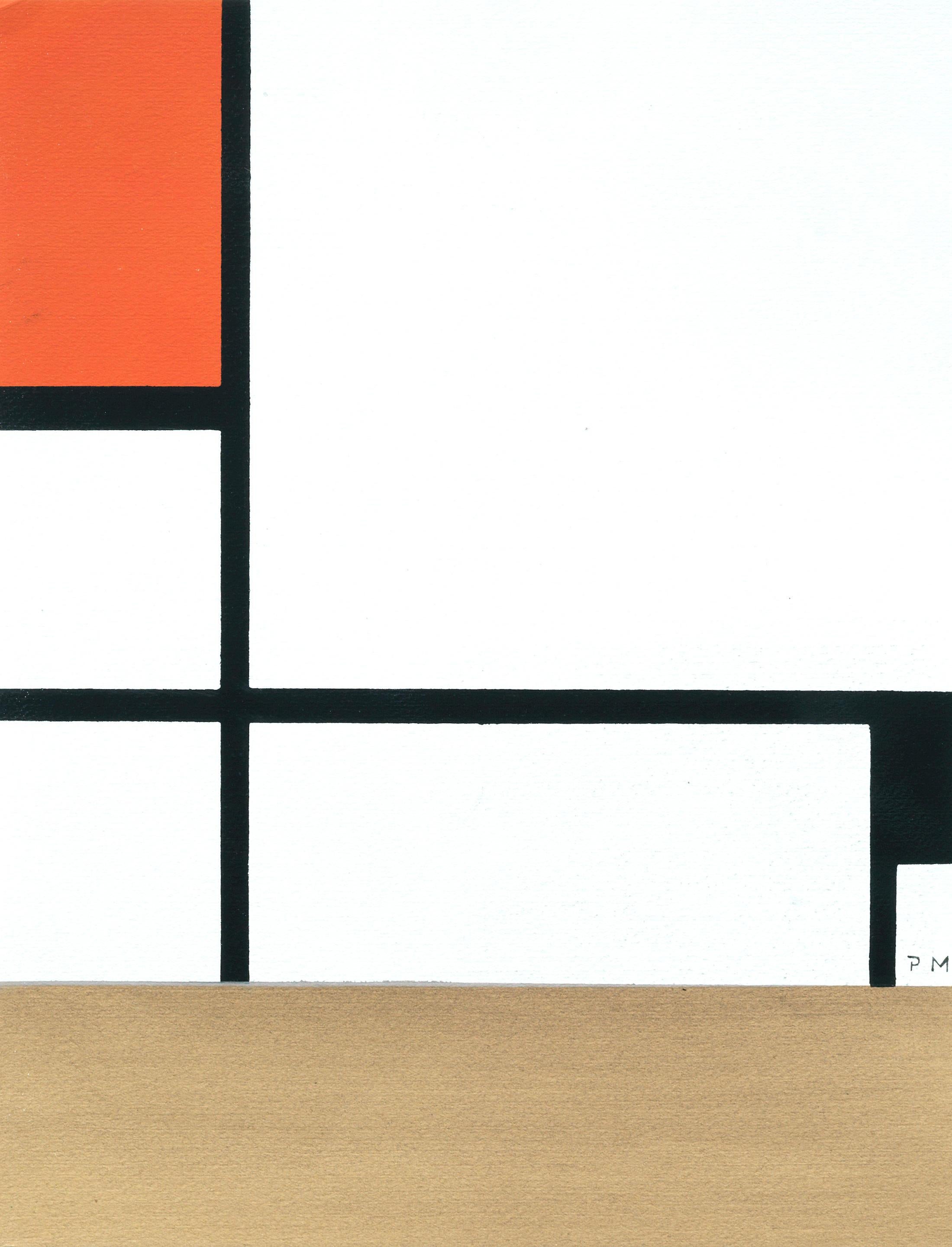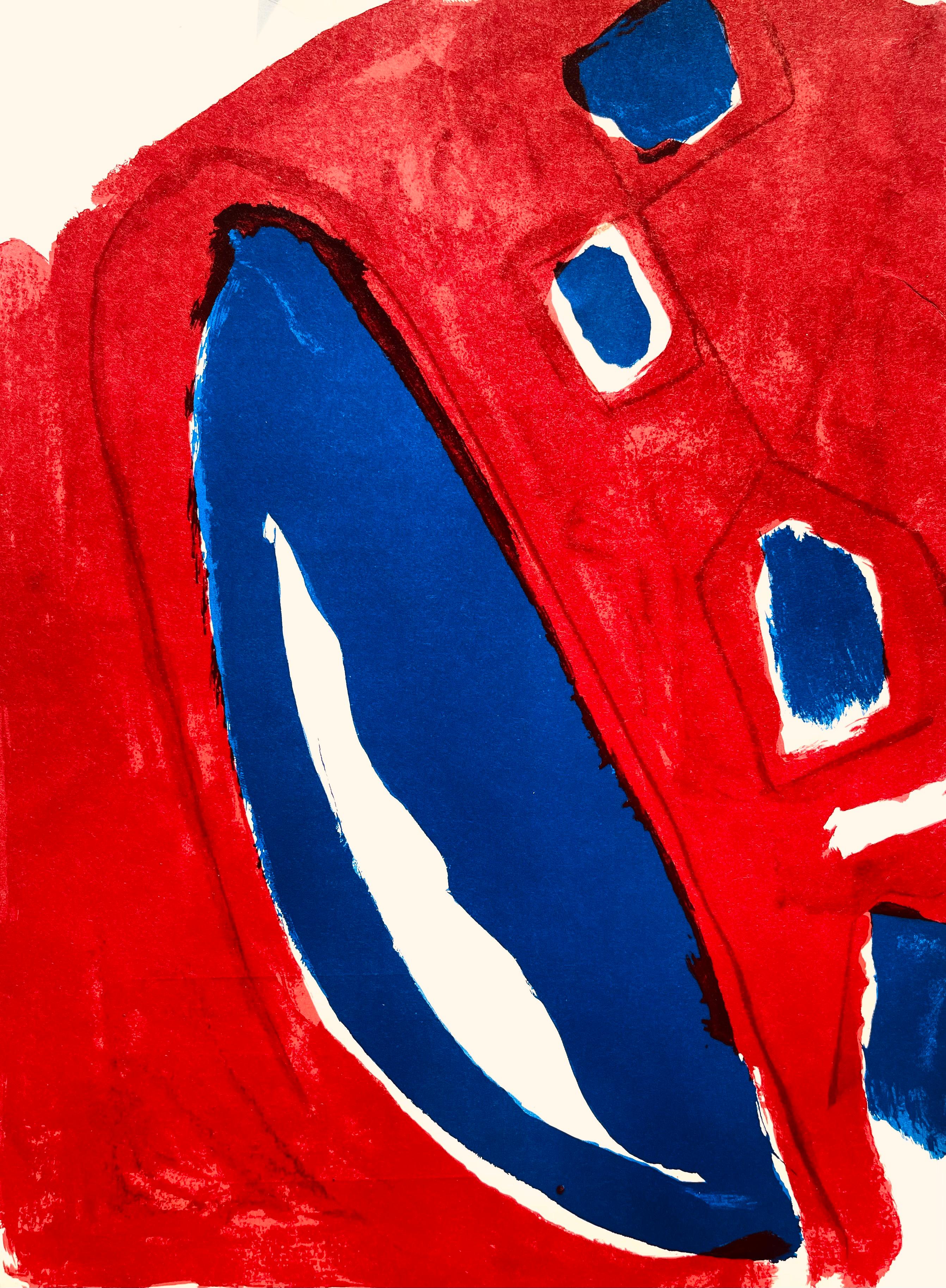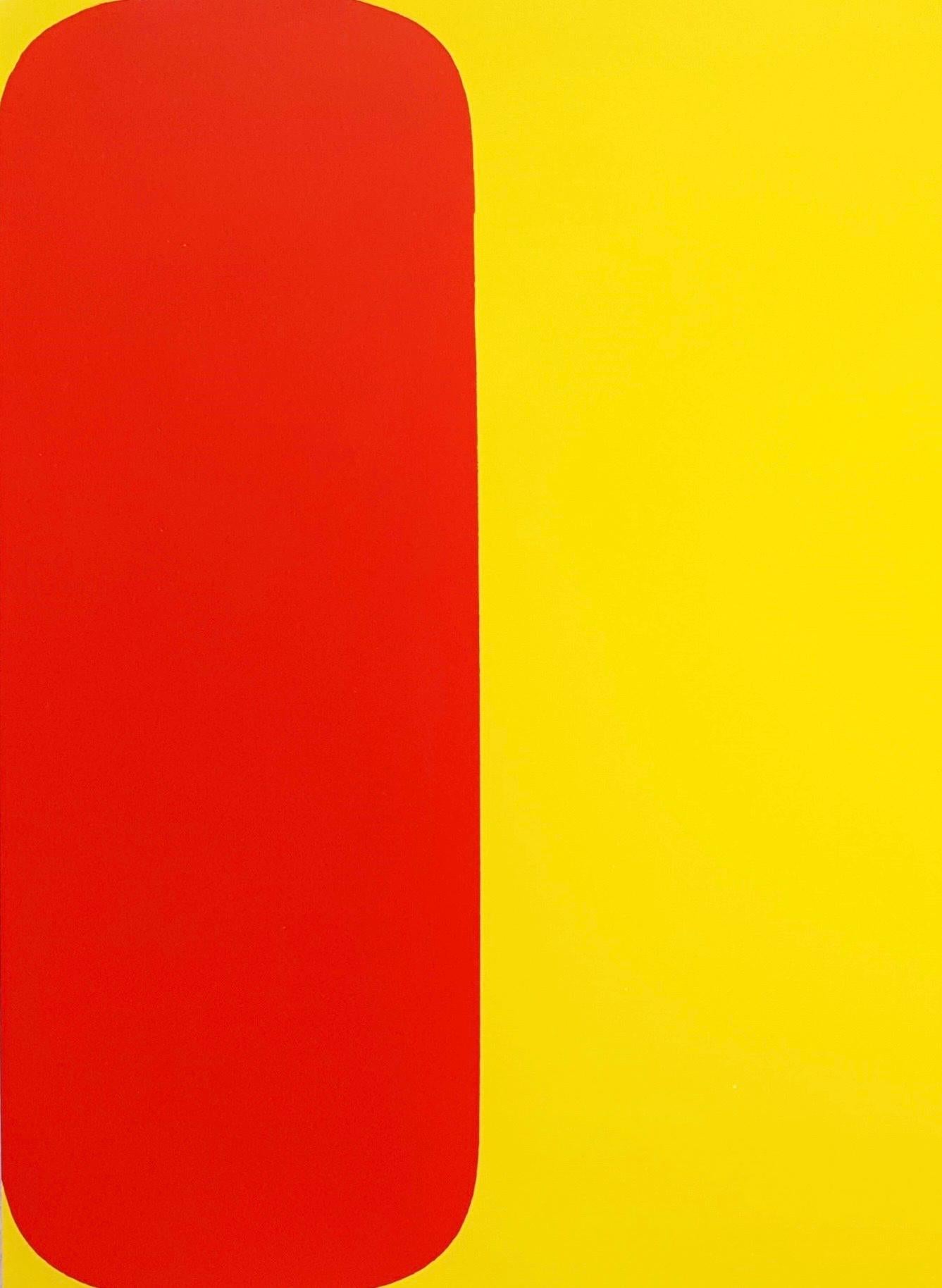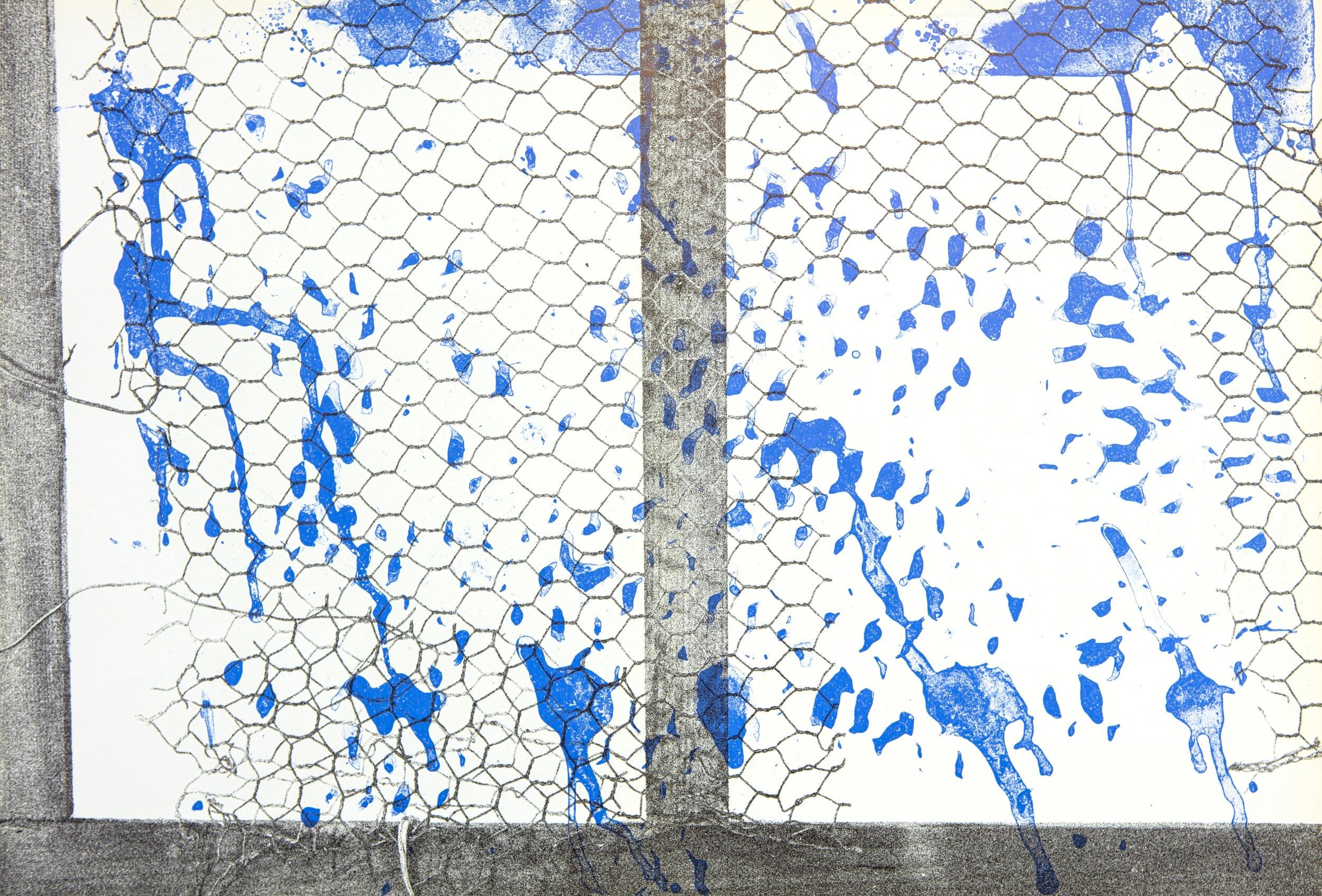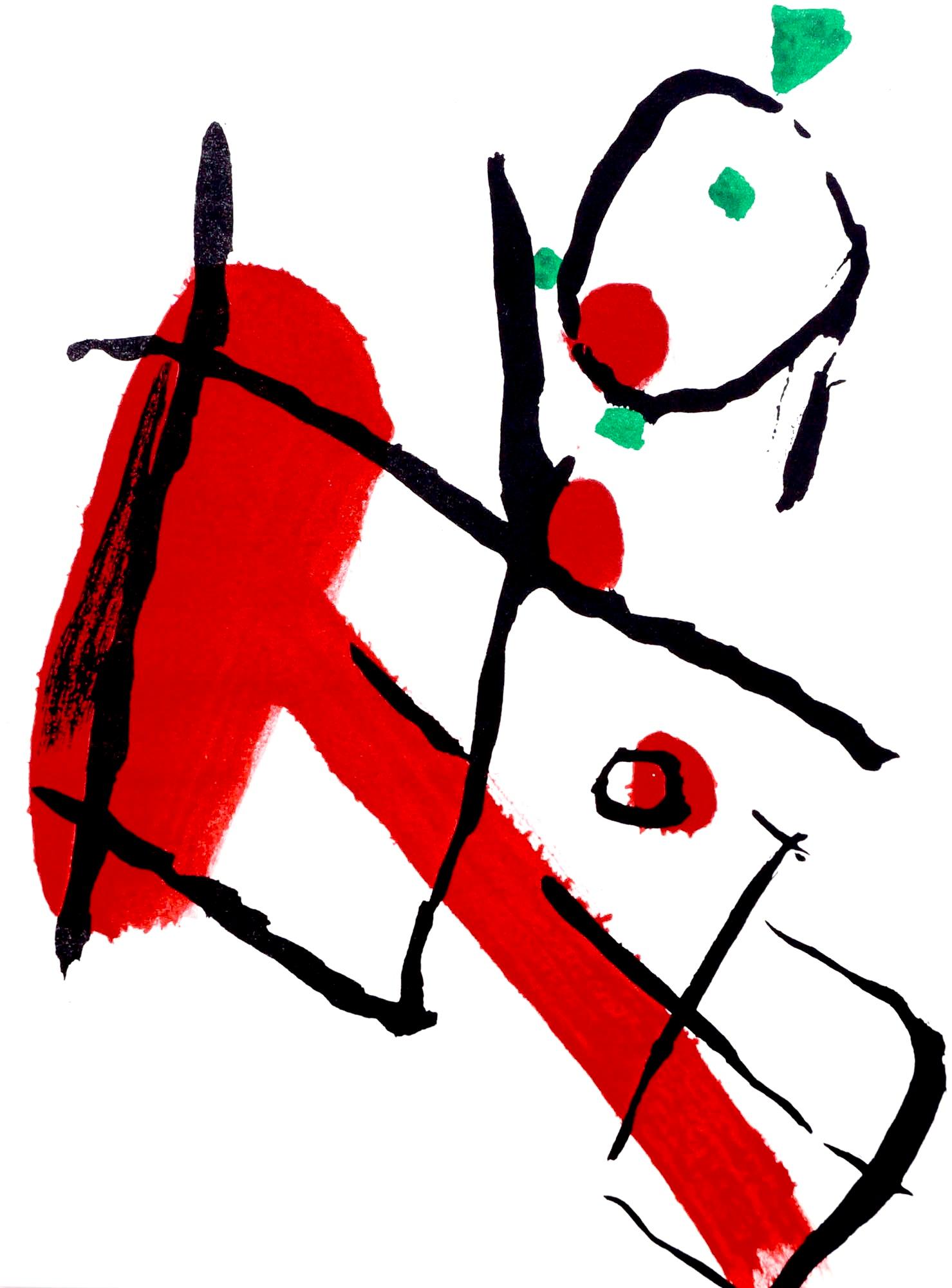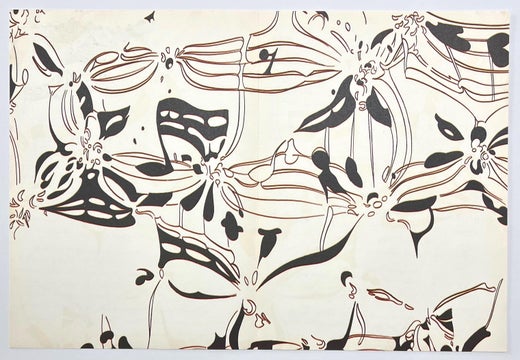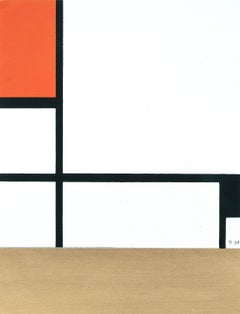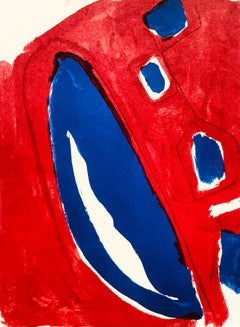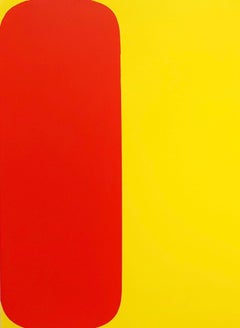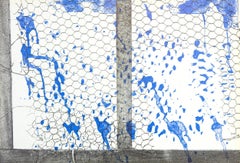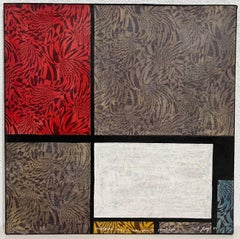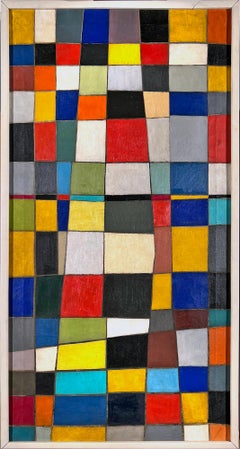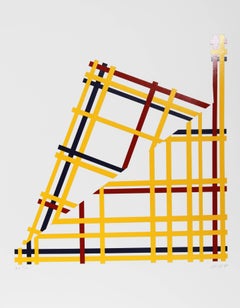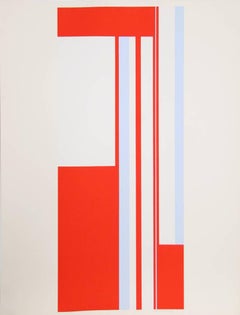Items Similar to Ramollissement de Mondrian, Derrière le miroir
Want more images or videos?
Request additional images or videos from the seller
1 of 11
Pol BuryRamollissement de Mondrian, Derrière le miroir1982
1982
$716
$89520% Off
£538.38
£672.9820% Off
€622.54
€778.1720% Off
CA$1,010.47
CA$1,263.0920% Off
A$1,096.41
A$1,370.5220% Off
CHF 581.63
CHF 727.0320% Off
MX$13,463.89
MX$16,829.8620% Off
NOK 7,192.84
NOK 8,991.0620% Off
SEK 6,811.62
SEK 8,514.5220% Off
DKK 4,646.98
DKK 5,808.7220% Off
About the Item
Lithograph on vélin paper. Paper Size: 15 x 22 inches, with centerfold, as issued. Inscription: Unsigned and unnumbered, as issued. Notes: From the folio, Derrière le miroir, N° 250, Hommage à Aimé et Marguerite Maeght, 1982. Published by Galerie Maeght S.A., Paris; printed by l'Imprimerie moderne du Lion, Paris, 1963. Excerpted from the folio (translated from French), This special issue of Derrière le miroir was designed and defined by Aimé Maeght in the fall of 1980. He envisioned its publication as a celebration with which artists and writers published since 1946 were to be associated. He also chose François Chapon, president of the Reverdy Committee, to write the presentation. This Derrière le miroir number 250 took the form, after its disappearance on September 5, 198I, of a tribute to Aimé Maeght and his wife Marguerite Maeght who died four years earlier. XXIV artists agreed to create an original graphic work for this issue which includes the general table of all issues as well as excerpts from texts by XXXII writers. Finished printing on June 2, 1982 on the presses of the l'Imprimerie moderne du Lion in Paris. CL examples were printed on Arches vellum, numbered from I to CL, and some non-commercial examples constituting the original edition. Additional notes: Excerpted from a Christie’s, New York lot essay, The life span of Derrière le Miroir was thirty-five years. Publication began in 1946. Aimé Maeght, initiator of Derrière le Miroir, had already made few attempts to start publications illustrated with fine printed lithographs in colours in the years prior to the launch of Derrière le Miroir. The name, Derrière le Miroir was suggested by Jacques Kober, manager of Galerie Maeght. The gallery had opened in 1945; the first number of Derrière le Miroir was released a year later. For this first issue Geer van Velde was invited to create lithographs to illustrate the publication. The lithographs in the first issue was printed by Mourlot, Paris. The first three issues of Derrière le Miroir were unsuccessful for Maeght as far as the edition size—the initial print-runs were far too large. From 30,000 for the first issue, the number was taken down to 10,000 for numbers two and three, until Derrière le Miroir number four was published in an edition of 1500. Maeght instituted a policy whereby unsold issues were recycled and used for the fabrication of new paper for the coming editions—this served to both conserve resources and also usually result in ultimate edition sizes far less than 1,500. With number four, the permanent format for Derrière le Miroir was established. Lithographs in colours were key; text was limited to comments on the featuring artist's exhibition taking place in the Galerie Maeght, and this catalogue format was defining to Derrière le Miroir. Galerie Maeght took on the leading role in Paris and presented all main artists including Braque, Matisse, Chagall, Léger, Bonnard, Chillida and many more. So too did Derrière le Miroir. The idea of a magazine was meanwhile still on the mind of Aimé Maeght. He found an insert as a solution. Two, and later four, pages of art review were inserted from 1952 onwards. In 1968 this find had ripened to independency and the dream of Aimé Maeght was now a tangible fact named l'Art vivant. Derrière le Miroir was on it's own again. Over 250 issues in a row. At that point publisher Aimé Maeght wished to make a mark with the publication of an hommage to all who once contributed to the magazine which came in the form of issue number 250, but was delayed by the death of Aimé Maeght. It was published after number 253 in 1982 and became a tribute to Aimé and Marguérite Maeght and 35 years of friendship with artists and poets. The era of Derrière le Miroir was closed with that final publication.
POL BURY (1922-2005) was a Belgian sculptor who began his artistic career as a painter in the Jeune Peintre Belge and COBRA groups. After attending the Académie des Beaux-Arts in Mons in 1938–39, he joined a group of Surrealist poets that included Achille Chavée. Bury’s early artistic endeavors suggest the influence of René Magritte and Yves Tanguy, and paintings he produced in the late 1930s and first half of the ’40s were included in the 1945 Exposition Internationale du Surréalisme held in Brussels. The focus of Bury’s art shifted in 1952 after he visited an exhibition featuring Alexander Calder’s work. The movement of Calder’s mobiles captivated Bury, and he began producing sculptures with moving components. These early kinetic sculptures were exhibited in the 1955 group exhibition Le Mouvement at Galerie Denise René in Paris. The exhibition proved particularly influential for the international ZERO network (active in the late 1950s and early ’60s), and Bury went on to participate in ZERO exhibitions and contribute to Heinz Mack and Otto Piene’s ZERO journal.
Bury began to include electric motors in many of his sculptures in 1957. The concealed motors activate the works, prompting elements to twist, tilt, or spin. Around 1964, the artist started creating his Cinetizations: photographs and prints depicting well-known monuments, but with the architectural structure fundamentally altered. In a Cinetization featuring the Eiffel Tower, the iron structure appears to wobble as if on the brink of collapse. Bury’s sculptures and Cinetizations both demonstrate moments of physical contingency that belie gravity’s certain pull. In a 1969 interview, the artist explained: “I am searching for the point which exists between the moving and the non-moving.”²
In the late 1960s, Bury began working with stainless and Cor-Ten steel, polished brass, and copper. By 1969 he had created his first public fountain, at the University of Iowa Museum of Art. Similar in many ways to his kinetic sculptures, the numerous fountains that Bury designed throughout his lifetime involve arrangements of cylinders and spheres that move slowly and irregularly. In these works, he embraced the reflections and light effects produced by the interaction of metal and water in the open air. In the late 1950s and early ’60s, Bury exhibited his work alongside that of other ZERO artists in Vision in Motion—Motion in Vision at Antwerp’s Hessenhuis (1959); Bewogen Beweging (Moving Movement, 1961), which traveled from Amsterdam’s Stedelijk Museum to the Moderna Museet, Stockholm, and the Louisiana Museum, Humlebæk, Denmark; tentoonstelling nul (known as Nul 62) and nul negentienhonderd vijf en zestig (Nul 65), both at Amsterdam’s Stedelijk Museum (1962 and 1965, respectively); and Documenta 3 (1964) in Kassel, Germany. Retrospectives featuring the artist’s work have been organized by the University Art Museum, University of California, Berkeley, in collaboration with the Solomon R. Guggenheim Museum, New York (1970); Museo de Arte Moderno in Mexico City (1977–78); Musée d’art moderne de la Ville de Paris (1982); and Josef Albers Museum in Bottrop, Germany (1990). In 2017, Pol Bury's artwork, Fontaine, sold for $288,143 USD, at Cornette de Saint Cyr, setting a world record for the artist.
- Creator:Pol Bury (1922 - 2005, Belgian)
- Creation Year:1982
- Dimensions:Height: 15 in (38.1 cm)Width: 22 in (55.88 cm)
- Medium:
- Movement & Style:
- Period:
- Condition:
- Gallery Location:Southampton, NY
- Reference Number:1stDibs: LU1465216701452
Pol Bury
Pol Bury (26 April 1922 – 28 September 2005) was a Belgian sculptor who began his artistic career as a painter in the Jeune Peintre Belge and COBRA groups. Among his most famous works is the fountain-sculpture L'Octagon, located in San Francisco.
About the Seller
4.9
Platinum Seller
Premium sellers with a 4.7+ rating and 24-hour response times
Established in 1978
1stDibs seller since 2021
1,187 sales on 1stDibs
Typical response time: <1 hour
- ShippingRetrieving quote...Shipping from: Southampton, NY
- Return Policy
Authenticity Guarantee
In the unlikely event there’s an issue with an item’s authenticity, contact us within 1 year for a full refund. DetailsMoney-Back Guarantee
If your item is not as described, is damaged in transit, or does not arrive, contact us within 7 days for a full refund. Details24-Hour Cancellation
You have a 24-hour grace period in which to reconsider your purchase, with no questions asked.Vetted Professional Sellers
Our world-class sellers must adhere to strict standards for service and quality, maintaining the integrity of our listings.Price-Match Guarantee
If you find that a seller listed the same item for a lower price elsewhere, we’ll match it.Trusted Global Delivery
Our best-in-class carrier network provides specialized shipping options worldwide, including custom delivery.More From This Seller
View AllMondrian, Sans titre, Société internationale d'art XXe siècle (after)
By Piet Mondrian
Located in Southampton, NY
Lithograph, stencil on vélin paper. Paper Size: 12.4 x 9.65 inches. Inscription: Signed in the plate and unnumbered, as issued. Notes: From the album, XXe siècle, Nouvelle série N° 9...
Category
1950s Abstract Geometric Abstract Prints
Materials
Lithograph
$1,996 Sale Price
20% Off
Free Shipping
Tal-Coat, Composition, Derrière le miroir (after)
By Pierre Tal-Coat
Located in Southampton, NY
Lithograph on vélin paper. Inscription: Unsigned and unnumbered, as issued. Good condition. Notes: From Derrière le miroir, N° 131, 1962. Published by Aimé Maeght, Éditeur, Paris; pr...
Category
1960s Modern Abstract Prints
Materials
Lithograph
Sans titre (Axsom Ib), Derrière le miroir
By Ellsworth Kelly
Located in Southampton, NY
Lithograph on vélin paper. Paper Size: 15 x 11 inches. Inscription: Unsigned and unnumbered, as issued. Catalogue raisonné references: Axsom, Richard H., and Ellsworth Kelly. The Pri...
Category
1960s Hard-Edge Abstract Prints
Materials
Lithograph
Rebeyrolle, Composition, Derrière le miroir (after)
By Paul Rebeyrolle
Located in Southampton, NY
Lithograph on vélin paper. Inscription: Unsigned and unnumbered, as issued. Good condition, with centerfold, as issued. Notes: From Derrière le miroir, N° 202, 1973. Published by Aim...
Category
1970s Pop Art Landscape Prints
Materials
Lithograph
Tal-Coat, Composition, Derrière le miroir (after)
By Pierre Tal-Coat
Located in Southampton, NY
Lithograph on vélin Chiffon de Mandeure paper. Unsigned and unnumbered, as issued. Good condition. Notes: From the album, Lithographies et Eaux-Fortes Originales, Livres Illustres Or...
Category
1960s Modern Abstract Prints
Materials
Lithograph
Sans titre (Axsom Ib), Derrière le miroir
By Ellsworth Kelly
Located in Southampton, NY
Lithograph on vélin paper. Paper Size: 15 x 22 inches, with centerfold, as issued. Inscription: Unsigned and unnumbered, as issued. Catalogue raisonné references: Axsom, Richard H., ...
Category
1960s Hard-Edge Abstract Prints
Materials
Lithograph
You May Also Like
Feminist Surrealist French Abstract Apres Mondrian Oil Painting Myriam Bat Yosef
Located in Surfside, FL
Myriam Bat-Yosef
Surrealist abstract oil painting in colorful abstract patterned rectangles and shades
Hand signed and dated 1984.
Miniature design letter also signed.
Myriam Bat-Yosef, whose real name is Marion Hellerman, born on January 31, 1931 in Berlin, Germany to a Jewish family from Lithuania, she is an Israeli-Icelandic artist who paints on papers, paintings, fabrics, objects and human beings for performances. Myriam Bat-Yosef currently lives and works in Paris. In 1933, her family fleeing the Nazi Holocaust, Miriam Bat-Yosef emigrates to Palestine and settles in Jaffa. In 1936, she suffers a family tragedy, her father, militant Zionist, is called to fight, still recovering from an operation of appendicitis. The incision will become infected, antibiotics did not exist yet, and her father will die in the hospital after 9 months of suffering.
Myriam and her mother leave Palestine to live in Paris for three years. French is Myriam's first school language. In 1939, still fleeing Nazism, she returned to Palestine, leaving France by the last boat from Marseille. She moved to Tel Aviv with her mother, aunt and maternal grandmother.
In 1940, she began attending the Academy of Fine Arts in Tel Aviv and took her name as an artist, Bat-Yosef, which means Joseph's daughter in Hebrew, as a tribute to her father. In 1946, Myriam graduated as a kindergarten teacher but wanted to be an artist. Her mother enrolled her in an evening school to prepare a diploma of art teacher. At 19, she performs two years of military service in Israel.
In 1952, with a pension of $50 a month that her mother allocated, she went to study at the Beaux-Arts in Paris. To survive, she has several activities while studying. In 1955, she had her first solo exhibition, at the Israeli Club on Wagram Avenue in Paris. Many artists, such as Yaacov Agam, Yehuda Neiman Avigdor Arikha, Raffi Kaiser, Dani Karavan and sculptors Achiam and Shlomo Selinger attended the opening .
In 1956, she enrolled at the School of Fine Arts in Florence. This is where she meets the painter Errô. They share an icy studio in winter. Myriam moves to Milan with friends. She organizes a joint exhibition with Erro, one room each, at the Montenapoleone gallery. Her works are admired by the sculptor Marino Marini and the painters Renato Birolli and Enrico Prampolini. Myriam and Erro exhibit in Rome, Milan, Florence and meet many personalities: Alain Jouffroy and his wife, the painter Manina, Roberto Matta and his wife Malitte, textile artist who was one of the founders of the Pompidou Center. Back in Paris, Myriam and Erro get married, which allows Myriam to avoid being called into the Israeli army during the Suez Canal War.
In 1957, Myriam and her husband went to Iceland. Myriam works in a chocolate factory. Having enough money, she starts producing art again. She exhibited in Reykjavik's first art gallery. She meets the artist Sigridur Bjornsdottir, married to the Swiss painter Dieter Roth .
In 1958, Myriam and her husband leave for Israel. They exhibit in Germany, then in Israel. Back in Paris, the couple became friends with artists of the surrealist movement, such as Victor Brauner, Hans Bellmer, the sculptor Philippe Hiquily, Liliane Lijn, future wife of Takis and photographer Nathalie Waag. Erro and Myriam have a daughter on March 15, 1960, named Tura, after the painter Cosmè Tura, but also close to the Icelandic Thora or the Hebrew Torah. Bat-Yosef’s complex trajectory throughout the 20th century is linked as much to the transnational history of what was for a time called the School of Paris as it is to a certain legacy of Surrealism. Her work features the same idea of resolving antinomies that also defined the spirit of surrealism, and is enhanced with her readings of the Kabbalah and her spiritual grounding in Taoism. However, while there are reasons for her approach to be associated with the process of the ready-made, it is important to consider the immediate intrication of these works with her practice of performance, during which the body itself is also painted – a feminist response to Yves Klein’s Anthropometries (1960) and an echo of the happenings which Jean-Jacques Lebel organised at the time in Paris.
In 1963, Erró told Myriam that if she wants to be a painter, she can not be his wife. Myriam chose to be a painter and the couple divorced in 1964. Since that time, Myriam Bat-Yosef has exhibited in many countries: Europe, United States, Japan, etc.
Although long in the shadows, the work of Myriam Bat-Yosef has been greeted by many artists and personalities: Anaïs Nin, Nancy Huston, André Pieyre of Mandiargues, José Pierre, René de Solier , Jacques Lacarrière, Alain Bosquet, Pierre Restany, Sarane Alexandrian and Surrealist André Breton who, after a visit to her studio, confided to having been intrigued by its phantasmagorical dimension. She was included in the book Pop Art and Beyond: Gender, Race, and Class in the Global Sixties by Mona Hadler and Kalliopi Minioudaki. Extract "World Citizen, Artist of the Pop Era Sarah Wilson; Why do we know so little of Myriam Bat-Yosef, the most important female Israeli artist of the Pop era? Issues of identity and sexuality feature constantly in her work. She exhibited internationally from Reykjavik to Tokyo; she had two shows at Arturo Schwarz’s famous Dada/surrealist gallery in Milan; she participated in feminist art events in Los Angeles. Above all, in 1971, she conceived Total Art, a Pop Gesamtkunstwerk inside and outside the Israel Museum, Jerusalem. Painter, performer, and installation artist, she was also a lover, wife, and mother. Of Lithuanian-Jewish descent, she was close to the family of philosopher Emmanuel Levinas. An émigré in Paris she would repudiate a national passport, participating in Garry Davis’s short-lived “World Citizens” movement. She continues the lineage of women surrealist artists: Valentine Hugo, Leonor Fini, Dorothea Tanning, Leonora Carrington, Unica Zürn, Jane Graverol...
Category
1980s Surrealist Abstract Paintings
Materials
Oil
Squares - Color Field Painting - like Mondrian
By Robert Goodnough, 1917-2010
Located in Miami, FL
Squares is a bridge between Mondrian and the Hard-edge abstraction movement. Clearly, this is a very early work because the artist has not yet found his mature style. The flat squares of uneven proportion, are in a formal but off-axis vertical /horizontal grid structure. Perhaps it's the artists take on a "drunk Mondrian" where the squares stumble to align themselves. Each square shape is different in shape and color and with visible brushstrokes and light impasto. Look carefully at the gray squares. They all have a slightly different hue. The squares are all unique individuals and not a repetition To Goodnough this was his departure from his influencer.
Squares show the influence of his teachers including Hans Hofman...
Category
1950s Abstract Expressionist Abstract Paintings
Materials
Oil
Folded NYC I (Mondrian), Pop Art Screenprint by Jim Jacobs
By Jim Jacobs
Located in Long Island City, NY
Artist: Jim Jacobs
Title: Folded NYC I (after Mondrian)
Year: 1980
Medium: Serigraph, signed and numbered in pencil
Edition: AP 40
Size: 33 x 26 inches
Category
1980s Abstract Geometric Abstract Prints
Materials
Screen
Series 1, De Stijl Geometric Abstract Screenprint by Ilya Bolotowsky
By Ilya Bolotowsky
Located in Long Island City, NY
A silkscreen print by Ilya Bolotowsky circa 1970. A retro modern piece with an abstract geometric design.
Artist: Ilya Bolotowsky, Russian/American (1907 - 1981)
Title: Series 1
Ye...
Category
1970s De Stijl Abstract Prints
Materials
Screen
$1,200 Sale Price
20% Off
Untitled (Mondrian), Oil on Canvas Painting, 2010
By David Klamen
Located in Orange, CA
Untitled (Mondrian), Oil on Canvas Painting, 2010
Additional information:
Medium: Oil on canvas
Condition: Excellent
Dimensions: 30 x 20 inches
About artist: David Klamen (American...
Category
21st Century and Contemporary Abstract Paintings
Materials
Canvas, Oil
Piece de Resistance (Mondrian), Pop Art Screenprint by Jim Jacobs
By Jim Jacobs
Located in Long Island City, NY
Artist: Jim Jacobs, American (b. 1945)
Title: Piece de Resistance (Mondrian)
Year: c. 1980
Medium: Screenprint, signed and numbered in pencil
Editi...
Category
1980s De Stijl Abstract Prints
Materials
Screen
More Ways To Browse
Vintage Cor
Vintage Electric Motors
André Lanskoy On Sale
Andre Masson Don Giovanni
Anna Helper
Antoni Tapies Galerie Maeght
Arthur Boden On Sale
Benedictus Variations
Bridget Riley Poster
Calder Boomerang
Calder Convection
Calder Moon Lithograph
Calder Skybird
Calder Tree
Calder Triangles
Carmen Gracia
Cecily Brown All The Nightmares Came Today
Chihuly Float
